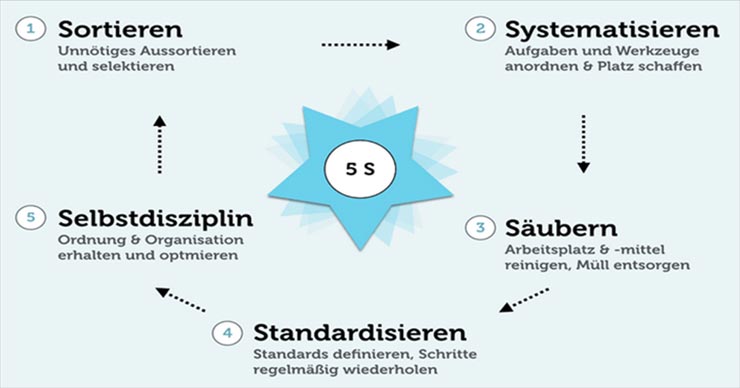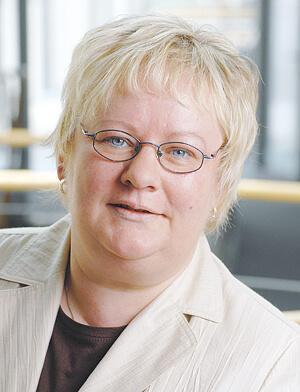Project period: June 2019 - July 2019
Consultants involved: 2
Initial situation
The client is an internationally active painting company that supplies both the automotive and medical technology industries.
The company commissioned REFA-Consulting to conduct a Potential analysis in order to check whether the Throughput times in the area of quality inspection can be reduced. The analysis was conducted systematically by REFA-Consulting using the REFA methodology.
Aim of the REFA counselling
The aim of the counselling was to examine how high the potential for reducing Throughput times in quality inspection is. The process consideration should take place from the receipt to the release of the sample at the end of the quality inspection.
The following boundary conditions were taken into account in the company’s organisational concept:
- fluctuating workload due to order peaks and unplannable number of adjustment loops,
- fast throughput time of a sample as opposed to processing a high number of samples,
- Reduction of Waiting times at the interfaces,
- complex planning task of the utilisation of the productions (capacity and qualification),
- Throughput time reduction within the individual processing steps (parallelisation/acceleration of processes) as well as
- Dimensioning the equipment and planning the capacity, especially the settings.
Task and procedure
The examination of the actual processes in quality inspection forms the basis of the REFA study. On this basis, REFA-Consulting looks for solutions for process optimisation and develops an optimised process organisation. The development of an optimised layout in quality inspection is the next step, which is then followed by the evaluation of the potentials from the optimised process organisation. At the end of the project, the further procedure for implementing the changed process organisation is developed and implemented.
Summary of the results (excerpt)
Consideration of the actual processes:
In the area of quality assurance , the majority of samples are currently processed by one employee. He works in three steps:
- Determination of the wet values
- Checking the paintwork
- Preparation of the release assessment or, if applicable, adjustment instruction
In some areas, e.g. in the automotive sector, there is a division of labour in the processing of samples. Here, the samples are processed in different "pools". An analysis of the samples shows that approx. 60 % of the samples lead to release after the initial values have been determined. This finding is an essential building block for the following considerations. The following conclusions can be drawn:
A significant proportion of samples requiring a lower qualification are analysed. The result is high personnel costs and dependencies in the staff.
Due to the predominant division by quantity, equipment and substances for analysing the samples are often missing at the various working systems. This leads to waste, as non-value-adding travelling times and search efforts occur.
The current planning of the samples is conducted on a person-by-person basis. This depends on the qualifications of the respective employees. This circumstance leads to an increased planning effort for the shift management and to suboptimal planning results.
A flow production can not be found in the area of quality assurance due to a mature structure. This has a negative impact on work order times and throughput times.
When looking at the individual work systems and their design, a lack of 5S strategy is noticeable compared to competitors. The result is non-value-adding time fractions in the process. Due to the existing process organisation, samples can only be insufficiently combined and designed in an optimised process.
Development of solutions:
After careful analysis, the Team of consultants created corresponding solutions. As already described, about 60 % of the analyses run through a processing step and are only released afterwards. The change in the process organisation should be optimised as follows:
The proportion of samples could be processed with a lower qualification profile in the future. For this purpose, a spatial separation between A and B was provided. By changing the developed process organisation, samples can be combined, the work systems can be designed more optimally and the equipment can be used more efficiently.
By relieving the employees from area A, resources are freed for the more highly qualified activity of "release assessments or, if necessary, adjustment instructions". This leads to a significant reduction in throughput times and reduces the current dependence on highly qualified personnel.
Further solutions were developed for area B. The optimised process organisation in area B should include the following changes. Creation of a wet pool for area B in order to relieve staff of these tasks here as well. In the subsequent processing loops, the wet values are to be processed by the reproduction personnel for quality reasons. The advantages have already been described in area A and also increase the added value here. The planning tasks of the shift management are significantly simplified.
No changes are planned for area C. The samples to be processed there are elaborate samples or samples that would interfere with the flow principle. The 5S principle should be reactivated in the context of restructuring.

Result of the counselling project / assessment of the potentials (excerpt)
The greatest potential lies in the island production of the wet pool. On the one hand, less qualified personnel can be employed here in order to reduce personnel costs. On the other hand, the work order time and the throughput time will be reduced by approx. 10 %. This means that with the current capacities, order peaks are unlikely to occur.
The restructuring will inevitably increase capacity in area B. This area can thus focus on the high-quality release assessments and adjustment instructions. This will also lead to further reductions in throughput times of about 5 % .
Consistent workplace design can tap further potential. After optimal design of the work systems, a potential of approx. 5 % is possible here without considerable effort.




 Bettina Dirks
Bettina Dirks



